Size 35 cm high Identification Af1939,34.1 | Created c.1300 C.E. | |
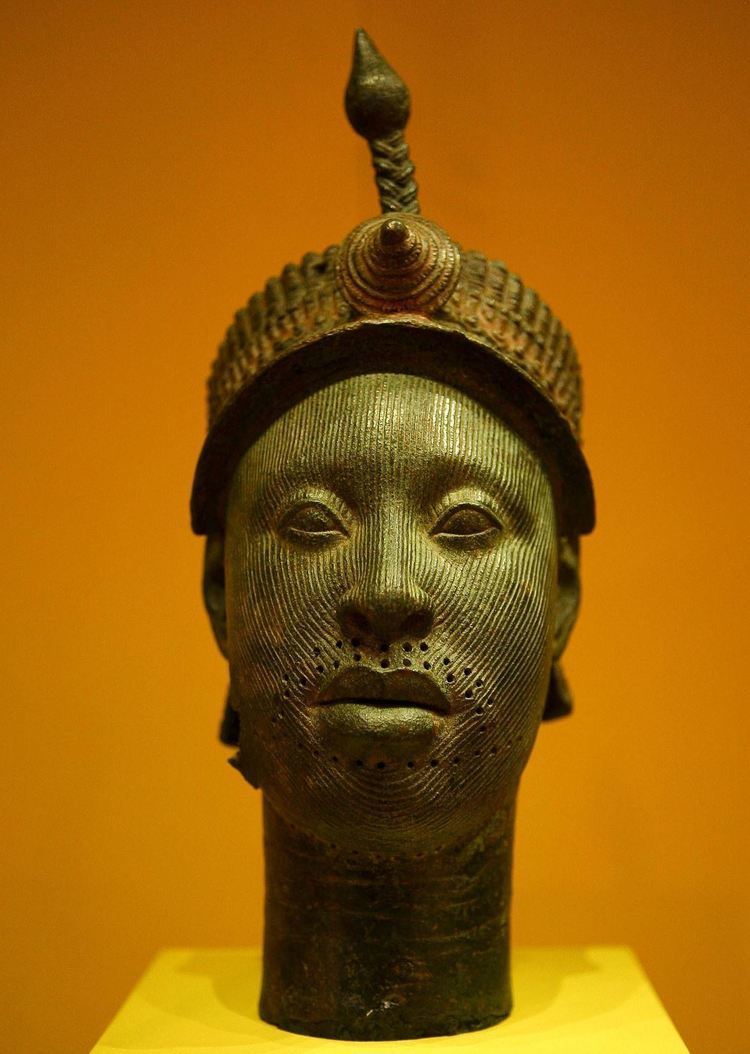 | ||
Similar Benin Ivory mask, Hoa Hakananai'a, Sphinx of Taharqo, Kakiemon elephants, Warren Cup | ||
The bronze head from ife documentary
The Bronze Head from Ife, or Ife Head, is one of eighteen copper alloy sculptures that were unearthed in 1938 at Ife in Nigeria, the religious and former royal centre of the Yoruba people. It is believed to represent a king. It was probably made in the thirteenth-fourteenth century C.E., before any European contact had taken place with the local population. The realism and sophisticated craftsmanship of the objects challenged Western conceptions of African art at the time. A year after its finding, the Ife Head was taken to the British Museum.
Contents
Description
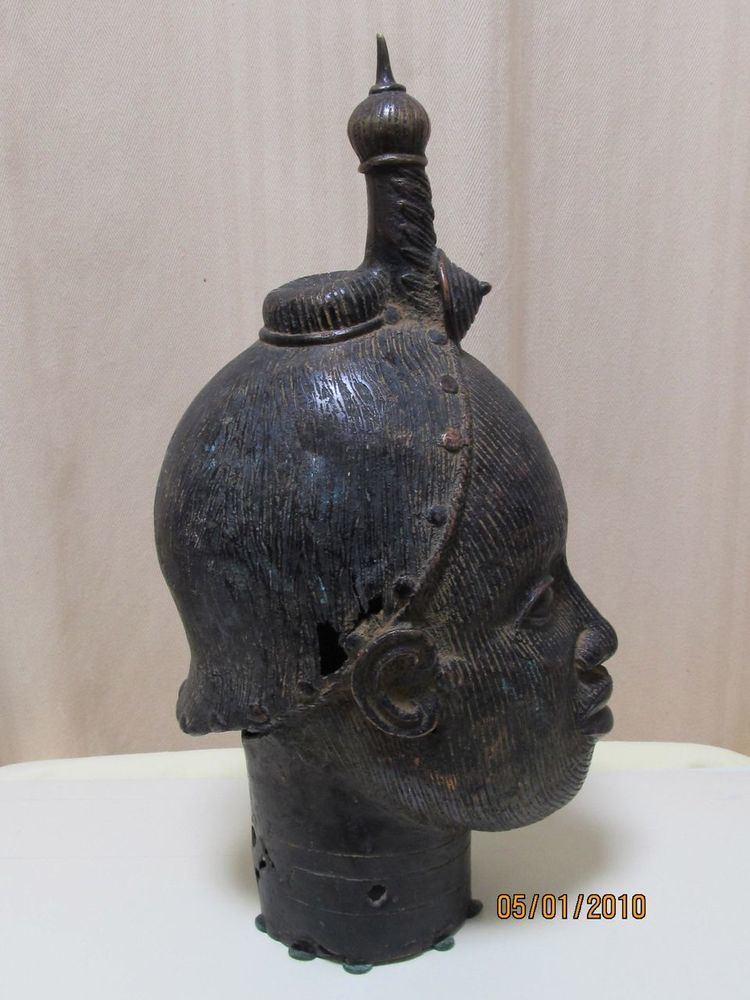
Like most West African "bronzes" the piece is actually made of copper and various alloys, described by the British Museum as "heavily leaded zinc-brass". Modern practice in museums and archaeology is increasingly to avoid terms such as bronze or brass for historical objects in favour of the all-embracing "copper alloy". The head is made using the lost wax technique and is approximately three-quarters life-size, measuring 35 cm high. The artist designed the head in a very naturalistic style.
The face is covered with incised striations, but the lips are unmarked. The headdress suggests a crown of complex construction, composed of different layers of tube shaped beads and tassels. This decoration is typical of the bronze heads from Ife. The crown is topped by a crest, with a rosette and a plume which now is slightly bent to one side. The crown's surface includes the remains of both red and black paint. The lifelike rendering of sculptures from mediaeval Ife is exceptional in sub-Saharan African art, and initially was considered the earliest manifestation of a tradition that continued in Yoruba art, in early Benin art and other pieces. An excavation in Igbo-Ukwu in 1959 provided scientific evidence of an established metal working culture and bronze artifacts that may be dated to the ninth or tenth centuries.
Discovery

The Ife Head was found in 1938 at the Wunmonije Compound, Ife, by accident during house building works. It was found among sixteen other brass and copper heads and the upper half of a brass figure. Most of the objects found in the Wunmonije Compound and neighbouring areas ended up in the National Museum of Ife, but a few pieces left Nigeria and are now in the collections of major museums. The British Museum's Ife Head was acquired by the editor of the Daily Times of Nigeria, and the bronze sculpture eventually made its way to the National Art Collections Fund, which donated it to the museum in 1939.
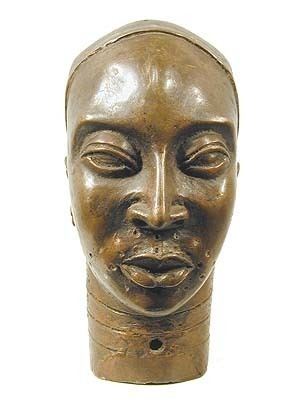
The discovery of the sculptures was the spur for the government to control the export of antiquities from Nigeria. Before this was achieved, this head made its way to London via Paris and another two were sent to America. Attempts to prevent further exports, prompted by Leo Frobenius, were successfully promulgated in 1938, when legislation was enacted by the colonial authorities. Frobenius was a German ethnologist and archaeologist who was one of the first European scholars to take a serious interest in African art, especially that of the Yoruba.
Ife

The Ife head is thought to be a portrait of a ruler known as an Ooni or Oni. It was likely made under the patronage of King Obalufon II whose famous naturalistic life size face mask in copper shares stylistic features with this work. Today among the Yoruba, Obalufon is identified as the patron deity of brass casters. The period in which the work was made was an age of prosperity for the Yoruba civilisation, which was built on trade via the River Niger to the peoples of West Africa. Ife is regarded by the Yoruba people as the place where their deities created humans.
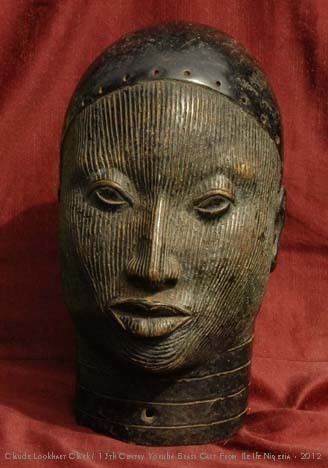
These bronze heads are evidence of additional trade since Ife-made glass beads have been found widely in West Africa. The copper is thought to be from local Nigerian ores, although earlier scholars believed it to have come from Central Europe, North West Mauritania, the Byzantine Empire, or Southern Morocco.
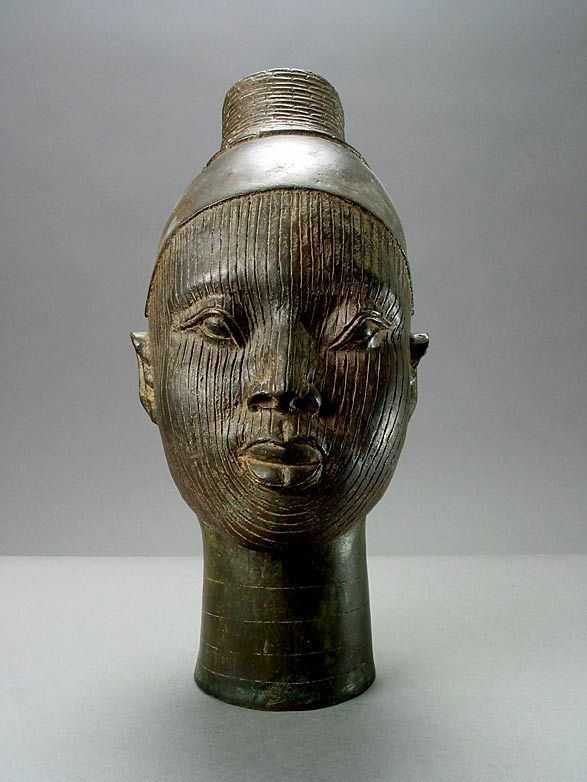
The bronze casts could have been modelled on contemporary terracotta sculptures. A long tradition of terracotta sculpture with similar characteristics existed in the culture prior to the date of the creation of these metal sculptures. Ivory was another material used frequently in African art.
Impact on art history
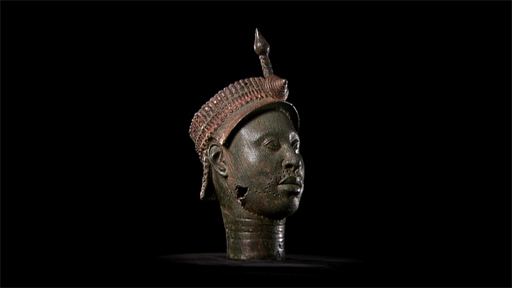
When the Ife heads first appeared in the Western World in the first half of the twentieth century, many experts compared them to the highest achievements of ancient Roman or Greek art. When Leo Frobenius discovered the first example of a similar head it undermined existing Western understanding of African civilisation. Experts could not believe that Africa had ever had a civilisation capable of creating artefacts of this quality. Attempting to explain what was thought an anomaly, Frobenius offered his theory that these had been cast by a colony of ancient Greeks established in the thirteenth century BC. He made a claim, widely circulated in the popular press, that his hypothesised ancient Greek colony could be the origin of the ancient legend of the lost civilization of Atlantis.
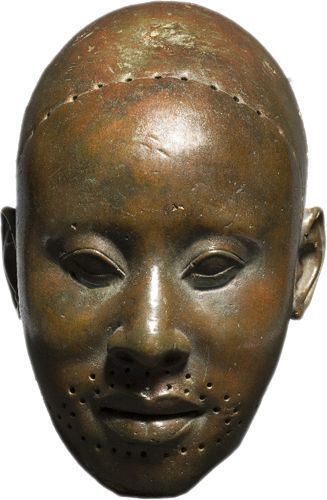
It is now recognised that these statues represent an indigenous African tradition that attained a high level of realism and refinement.
